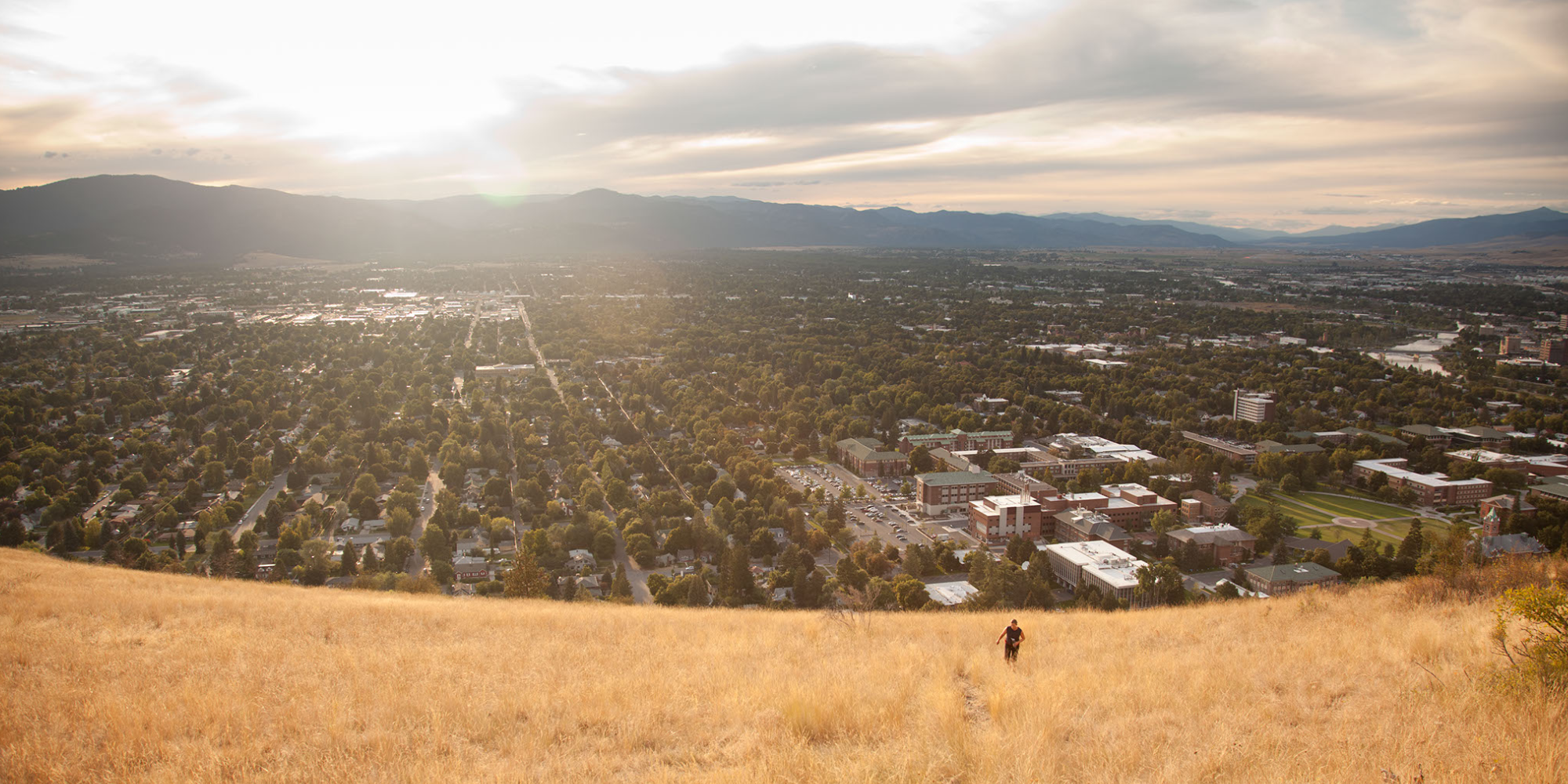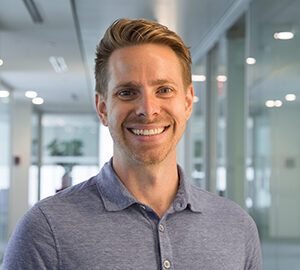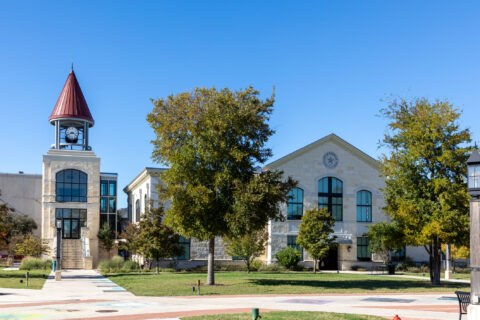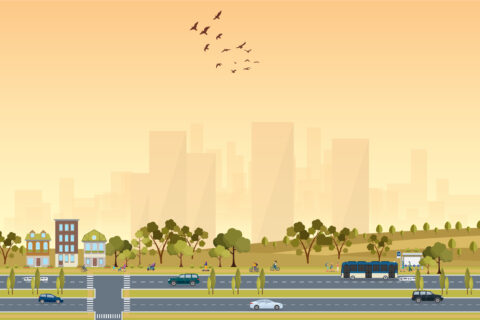Missoula, Montana was one of eight cities selected to participate in the NLC Leadership in Community Resilience Program for 2020, receiving a grant and ongoing technical support.
Like many communities around the country, Missoula has ambitious decarbonization goals, driven by a commitment to achieve 100% clean electricity by 2030, their Climate Ready Missoula plan, and their Zero by Fifty plan. Buildings play a role in each of these efforts as they comprise 52% of the community’s carbon emissions, according to 2014 data. Addressing building emissions is important as the city faces both an aging housing stock and a new construction boom. Total building emissions must be reduced by an estimated 15% by 2030 in order for Missoula to meet their carbon neutrality and 100% clean electricity goals.
With the goals established, the city needed to know what strategies would help the community achieve their targets. So the city, in partnership with Climate Smart Missoula, a local non-profit, and Missoula County, set out to convene a summit with key stakeholders – designers, developers, architects, builders, real estate professionals, financiers, non-profits, and local government staff – to discuss how to build for the future and decarbonize design, construction, operation, and deconstruction of the city’s building stock. The Building(s) for the Future Summit, with grant funding and ongoing technical support from the National League of Cities Leadership in Community Resilience program, was all set for spring 2020 but the rapid acceleration of the coronavirus pandemic upended those plans.
Learn what it means to Build for the Future Video:
NLC’s Nick Kasza held a virtual discussion with Climate Smart Missoula’s Executive Director Amy Cilimburg and Caroline Lauer, formerly Climate Smart Missoula’s Program Director and now Missoula County’s Climate Resilience Coordinator, about their experience in the Leadership in Community Resilience program and the progress the city made during the last year. Some of the responses have been edited for clarity.
Nick Kasza: Everything happened so quickly in March 2020. One minute I was looking up flights to Missoula to attend the summit, the next I was emailing you to say that I could no longer travel. How did the pandemic alter your plans for the Building(s) for the Future Summit?
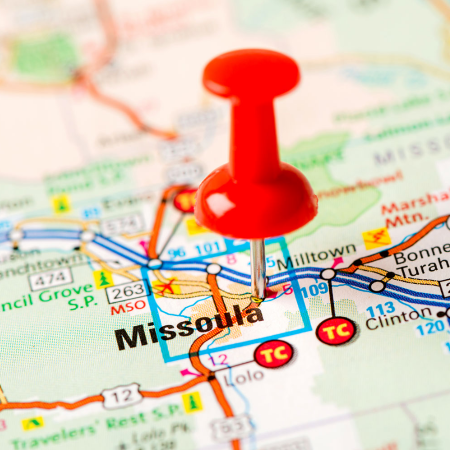
Amy Cilimburg: Originally, the plan was to have an in-person summit that would bring key community stakeholders together for a morning of learning and discussion. It was going to be an opportunity to share ideas, find connections, and chart a path to building a low-carbon, equitable Missoula, considering building design, construction, operation, and its next life (whether a major rehab project or deconstruction). We also planned to have this conversation in the context of our housing crisis and work to multi-solve across issues of growth, housing, and climate. We had a date and the logistics dialed in–RSVP emails were even sent out to stakeholders for April 10! Unfortunately, we had to put the in-person summit on hold given public health guidance, and it soon became clear that we’d need postpone the summit indefinitely.
Nick: How did you maintain focus after it was decided to postpone the summit and make a pivot to a virtual event?
Amy: It was challenging. We knew in-person events weren’t going to be an option for the foreseeable future, but we didn’t know for how long – was it weeks or months? While we waited for clarity, we knew we had to maintain momentum. We held bi-monthly steering committee meetings and reached out to individual stakeholders to better understand local opportunities and constraints and how these were shifting with new economic uncertainties. Our monthly coordination calls with you helped us shift gears and begin planning for a high-impact virtual summit.
Caroline Lauer: I’m quite thankful for those monthly check-in calls with NLC. They were helpful anchors and mini-deadlines that kept us moving forward. While it was difficult, we were able to use the extra time to think creatively – the video linked above wouldn’t have happened without the delay. You also connected us to a fantastic team of researchers at ACEEE (American Council for an Energy-Efficient Economy) and they provided crucial technical support on building policy and program precedents and best practices to inform our conversation. The timing aligned for working with them was a definite silver lining of the delay, and it gave us a project to focus on while we waited to decide what was next for the summit.
Nick: I know that your team also did extensive research and created a policy menu. What was included in the policy menu?
Amy: With the help of ACEEE, we took a deep dive into the myriad options available to mid-size communities like ours. Caroline had some preliminary research into what other cities are doing and which of those options were legal given Montana law and precedent. ACEEE gave us a swath of additional options to consider, as well as resources for how we could begin to evaluate their GHG reduction potential and cost to implement. By the end of the summer, we had a full menu of options.
Caroline: And that’s how we thought of it – a dinner menu! We figured if we gave our stakeholders the necessary information (via “Background Briefs”), they could help us chose the most appetizing options. All of it was combined in a table that included a brief description of the option, helpful precedents, how it could be implemented, an estimated CO2 reduction, and a feasibility analysis so people could peruse as they wished – you all don’t know how much self-restraint it took to not design it as an actual dinner menu!
Nick: It sounds like there was some homework for attendees prior to the virtual summit. How did that background reading tie into the summit’s agenda?
Caroline: We did give them homework! Amy has a lot of experience planning these types of events, and she’s found that we can maximize the time together if people spend a little bit of time reading brief foundational materials. Our virtual summit had a jampacked agenda, so we wanted folks to come as informed as possible. Each attendee selected a breakout group of interest in their RSVP form, and they were sent a breakout-group specific background brief (based on the menu of options) prior to the event.
Amy: For the overall agenda, we started with lightning round talks from experts across the country who shared inspiring and innovative approaches to reducing building emissions and embodied carbon while also considering issues of equity and economics, including energy disclosure policies in Minneapolis and a sustainable Master Planned Development near Austin. These presentations highlighted ideas that were raised in the background briefs, and the lightning talks were followed by breakout sessions that went deeper into specific topics like owner-occupied housing, large residential and commercial buildings, and developer incentives for low-carbon, innovative new construction projects. The background briefs provided strategies for those specific topics. The breakout group discussions focused on charting the path forward for how Missoula can build a more equitable, low carbon future.
Nick: What was your key takeaway from the summit?
Caroline: From the planning and facilitation perspective, keep it simple. There are a lot of wonderful tools out there with a bunch of bells and whistles. We found it helpful to think about the classic tenets of an in-person breakout group, like post-it notes and dot exercises, and stick to them.
Amy: Focus on the positives. Hosting big in-person events is in Climate Smart’s DNA, so it was hard to transition to the virtual event, but there were benefits to this approach. First, we were able to bring in people from around the country to speak to the group, and second, so much of the detail and thought that came from ACEEE wouldn’t have been possible without the delay. At the time, postponing indefinitely was difficult, but we wouldn’t have had such a firm foundation of research without it. Finally, we recorded the panel, and community leaders who weren’t able to attend have now watched it online, something we hadn’t been able to offer before.
Caroline: This work can be really daunting to both conceptualize and bring to the community. The interconnections with development and housing challenges are best addressed together with climate resiliency and energy goals. There’s no “right” way to tackle all this, so look for a mix of approaches for your community. Take little bites out of the problem, be patient with yourselves, and give things the time they need to develop.
Nick: It sounds like the Building(s) for the Future Summit was very successful! What next steps were identified to keep the momentum going and has any progress been made since January?
Amy: We’ve coalesced the information gathered at the event into a summit report, and we’re using it to guide policy and programming efforts in Missoula. The summit helped us articulate four overarching goals for low-carbon building in our community, including:
- Generate excitement and enthusiasm for a culture of low-carbon building
- Adopt a local stretch code and disclosure ordinance in the next year and create a phased policy approach
- Expand existing resources and capacity
- Find opportunities for further connection and collaboration
In addition to crafting our report, we’ve also been able to collaborate with some of our panelists and local planners to find ways to bring their ideas to Missoula’s newly developing Mullan Area.
The City’s longtime Energy Conservation Coordinator, Chase Jones, had his last day on the date of our summit, so some of this work has paused until his replacement joins the team. We’re excited to keep building the momentum. We’re also lucky to have our Steering Committee still engaged and interested in moving this work forward. Overall, we believe what we have both learned from and brought to our community with this Building(s) for the Future effort is to going to help chart the course for Missoula’s future. Climate change can be thought of less as a problem to be dealt with than as an overarching organizing principle, and this effort sure helps us organize our approach to a livable future, with equity at our center.
The background briefs, policy menu, slides, and summit recording are available on the Climate Smart Missoula website. They are great resources for other cities exploring how to reduce building emissions.
Want to learn more?
Visit the Leadership in Community Resilience page to learn more about the iniative and how your city can get involved.
